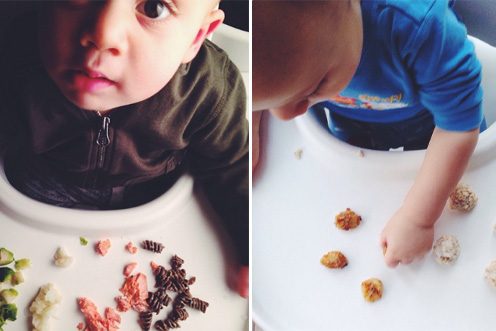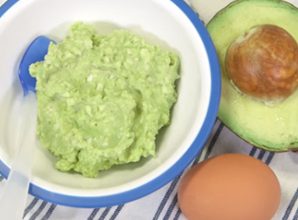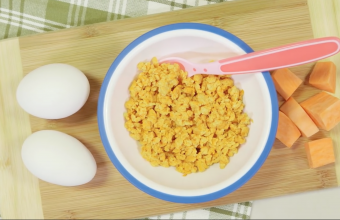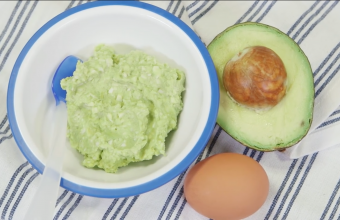For the first time in over a decade, I’m thinking about feeding a baby. Everything from breastfeeding to baby-led weaning has been on my mind, and I’m happily surprised to learn that the baby food guidelines have changed quite a lot since the last time there was an infant at our table.
For starters, while the mechanics of breastfeeding seemed to have stayed the same (thank goodness!), we are now encouraged to give vitamin D supplements to babies who are exclusively breastfed. Good to know. We’re also advised to skip fully pureed foods, and encouraged to leave them a little lumpy in order to introduce our babies to a variety of textures. This reminds me of baby-led weaning (BLW), a new way of feeding babies that I’m completely drawn to. In short, it’s the skipping of those runny purees and infant spoons in favour of soft-cooked, tender finger foods that baby eats themselves (with supervision, of course).
I’m just starting my reading and research on this topic, but Savvy Storyteller Sarah is a pure pro when it comes to feeding her son with this method, and I’ve been reading her BLW adventures with great enthusiasm. She’s prepared a primer on the topic, which will give you the complete low-down on how and why you use this method to feed your baby, and I’ve already printed off her recipe ideas and brilliant breakfast suggestions, even though I won’t need them for at least six or seven months. I’ll be sure to write more on the topic as I put this new feeding method into practice myself, but for now, let Sarah be your guide.
Something else to know is that last May, Health Canada, Dieticians of Canada, The Canadian Paediatric Society and the Breastfeeding Committee for Canada released new guidelines on how we feed our babies. Perhaps the biggest change I can see is that now we’re encouraged to start our babies off on iron-rich foods like meat, where as back in 2002 (when I was last feeding an infant) beef was one of the last items we added to our babies diet (after they made it through the rotation of the fruits and vegetables I wanted to introduce to them first).
Here is a breakdown of the new recommendations for feeding babies:
Birth to Six Months
- Breastmilk and/or formula only
- Vitamin D supplement for babies who are exclusively breastfed.
Six to Twelve Months
- Breastmilk and/or formula
- Iron rich foods like meat (beef, poultry, lamb) and meat alternatives (eggs, tofu, legumes)
- Iron-fortified cereal
- Pureed yet lumpy fruits and vegetables (the lumps are important to get babies used to the different textures in food)
- Safe finger foods include: piece of tender, soft-cooked fruits and vegetables, soft, ripe fruit like bananas, ground or mashed cooked meats, grated cheese, bread crust and/or toast.
- Avoid honey until baby is at least 12 months old
Here are a few other things that are new:
- Ditch the sippy cup! It’s now recommended that babies drink from an open-mouthed cup to support the development of mature feeding skills.
- Introduce common food allergens as the first foods introduced to babies (think eggs, peanuts, milk, seafood, sesame, tree nuts, and wheat). If a reaction is likely to occur it will happen in the first 48 hours, and just be sure to wait 2 full days between introductions of these foods.
Since these beautiful babies don’t come with manuals, there is a parent-friendly resource guide available on the Government of Canada’s website.
So what do you think? Have things changed since you were feeding a baby? Are you trying baby-led weaning? Let’s chat’¦
Image from (Cooking for) Kiwi & Bean.
Tagged under: Baby food,BLW,baby-led weaning,cooking for kiwi and bean,sarah huggins,what to feed babies,baby food recipes,baby food breakfast
Category: first-foods-for-babies






